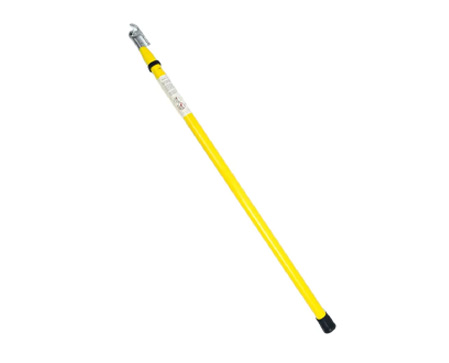
-
 Afrikaans
Afrikaans -
 Albanian
Albanian -
 Amharic
Amharic -
 Arabic
Arabic -
 Armenian
Armenian -
 Azerbaijani
Azerbaijani -
 Basque
Basque -
 Belarusian
Belarusian -
 Bengali
Bengali -
 Bosnian
Bosnian -
 Bulgarian
Bulgarian -
 Catalan
Catalan -
 Cebuano
Cebuano -
 Corsican
Corsican -
 Croatian
Croatian -
 Czech
Czech -
 Danish
Danish -
 Dutch
Dutch -
 English
English -
 Esperanto
Esperanto -
 Estonian
Estonian -
 Finnish
Finnish -
 French
French -
 Frisian
Frisian -
 Galician
Galician -
 Georgian
Georgian -
 German
German -
 Greek
Greek -
 Gujarati
Gujarati -
 Haitian Creole
Haitian Creole -
 hausa
hausa -
 hawaiian
hawaiian -
 Hebrew
Hebrew -
 Hindi
Hindi -
 Miao
Miao -
 Hungarian
Hungarian -
 Icelandic
Icelandic -
 igbo
igbo -
 Indonesian
Indonesian -
 irish
irish -
 Italian
Italian -
 Japanese
Japanese -
 Javanese
Javanese -
 Kannada
Kannada -
 kazakh
kazakh -
 Khmer
Khmer -
 Rwandese
Rwandese -
 Korean
Korean -
 Kurdish
Kurdish -
 Kyrgyz
Kyrgyz -
 Lao
Lao -
 Latin
Latin -
 Latvian
Latvian -
 Lithuanian
Lithuanian -
 Luxembourgish
Luxembourgish -
 Macedonian
Macedonian -
 Malgashi
Malgashi -
 Malay
Malay -
 Malayalam
Malayalam -
 Maltese
Maltese -
 Maori
Maori -
 Marathi
Marathi -
 Mongolian
Mongolian -
 Myanmar
Myanmar -
 Nepali
Nepali -
 Norwegian
Norwegian -
 Norwegian
Norwegian -
 Occitan
Occitan -
 Pashto
Pashto -
 Persian
Persian -
 Polish
Polish -
 Portuguese
Portuguese -
 Punjabi
Punjabi -
 Romanian
Romanian -
 Russian
Russian -
 Samoan
Samoan -
 Scottish Gaelic
Scottish Gaelic -
 Serbian
Serbian -
 Sesotho
Sesotho -
 Shona
Shona -
 Sindhi
Sindhi -
 Sinhala
Sinhala -
 Slovak
Slovak -
 Slovenian
Slovenian -
 Somali
Somali -
 Spanish
Spanish -
 Sundanese
Sundanese -
 Swahili
Swahili -
 Swedish
Swedish -
 Tagalog
Tagalog -
 Tajik
Tajik -
 Tamil
Tamil -
 Tatar
Tatar -
 Telugu
Telugu -
 Thai
Thai -
 Turkish
Turkish -
 Turkmen
Turkmen -
 Ukrainian
Ukrainian -
 Urdu
Urdu -
 Uighur
Uighur -
 Uzbek
Uzbek -
 Vietnamese
Vietnamese -
 Welsh
Welsh -
 Bantu
Bantu -
 Yiddish
Yiddish -
 Yoruba
Yoruba -
 Zulu
Zulu


marras . 16, 2024 08:43 Back to list
Innovative Grounding Solutions for Electrical Systems Using Earth Rods and Technology
Understanding Earth Rods Essential Grounding Solutions for Electrical Safety
In the realm of electrical engineering and safety, the concept of grounding is paramount. One of the key components in establishing an effective grounding system is the earth rod. An earth rod, sometimes referred to as a grounding rod, is a conductive metal rod that is driven into the ground to provide a direct path for electrical currents to dissipate safely into the earth. This article delves into the importance of earth rods, their applications, installation, and maintenance.
The Importance of Earth Rods
Earth rods play a crucial role in protecting both people and property from electrical faults. When electrical surges occur—whether due to lightning strikes, power outages, or equipment malfunctions—an earth rod acts as a conduit, allowing excess electrical energy to flow safely into the ground. This minimizes the risk of electric shock to individuals and prevents damage to electrical appliances and systems.
Moreover, grounding systems, including earth rods, are often mandated by electrical codes and regulations. Compliance with these standards is critical for ensuring the safety of electrical installations in residential, commercial, and industrial settings.
Applications of Earth Rods
Earth rods are used across various sectors. In residential settings, they are installed as part of the grounding system for homes to protect against electrical faults. In commercial buildings, earth rods ensure that larger systems, such as HVAC and electrical panels, have a reliable grounding mechanism. Industrial facilities, particularly those with heavy machinery and sensitive electronic equipment, often employ multiple earth rods to safeguard their operations.
earth rod

In addition to traditional applications, earth rods are also used in renewable energy systems, including solar and wind installations. These systems often require separate grounding solutions to protect against surges that may occur during their operation.
Installation and Maintenance
The installation of an earth rod involves several steps. First, the location must be chosen carefully to ensure that the rod can be driven deep enough into the ground to reach areas of low resistance. Typically, an earth rod should penetrate at least 2.5 to 3 meters into the earth. The rod itself is usually made of copper or galvanized steel, known for their excellent conductivity and resistance to corrosion.
Proper installation also includes connecting the earth rod to the electrical system using appropriate grounding conductors. The connections should be secure and checked periodically to prevent corrosion and ensure continuous conductivity.
Maintenance of earth rods is equally vital. Regular testing of the grounding system’s resistance is necessary to verify its effectiveness. A resistance reading of 25 ohms or less is often considered acceptable, although this can vary based on local regulations and specific applications.
Conclusion
In conclusion, earth rods are an essential element of electrical safety. By providing a reliable means for the dissipation of excess electrical energy into the ground, they protect people and property alike. Understanding their importance, applications, and maintenance can help individuals and organizations create safer electrical systems that comply with regulatory standards. Investing in an effective grounding solution is not merely a choice but a necessity for anyone dealing with electrical installations.
Latest news
The Unique Design of Cable Socks
NewsJun.04,2025
Swivel Connectors in Industrial Automation
NewsJun.04,2025
Safety Features of Link Sticks
NewsJun.04,2025
How to choose the best cable pulling winch for sale
NewsJun.04,2025
Fish tape safety precautions
NewsJun.04,2025
Essential Maintenance Tips for Cable Pulling Tools
NewsJun.04,2025











